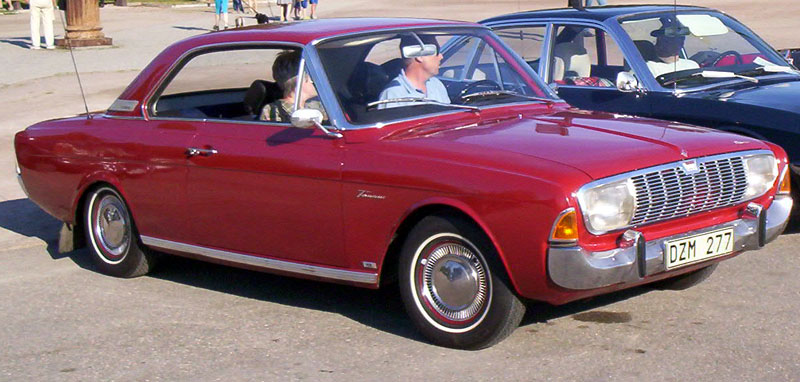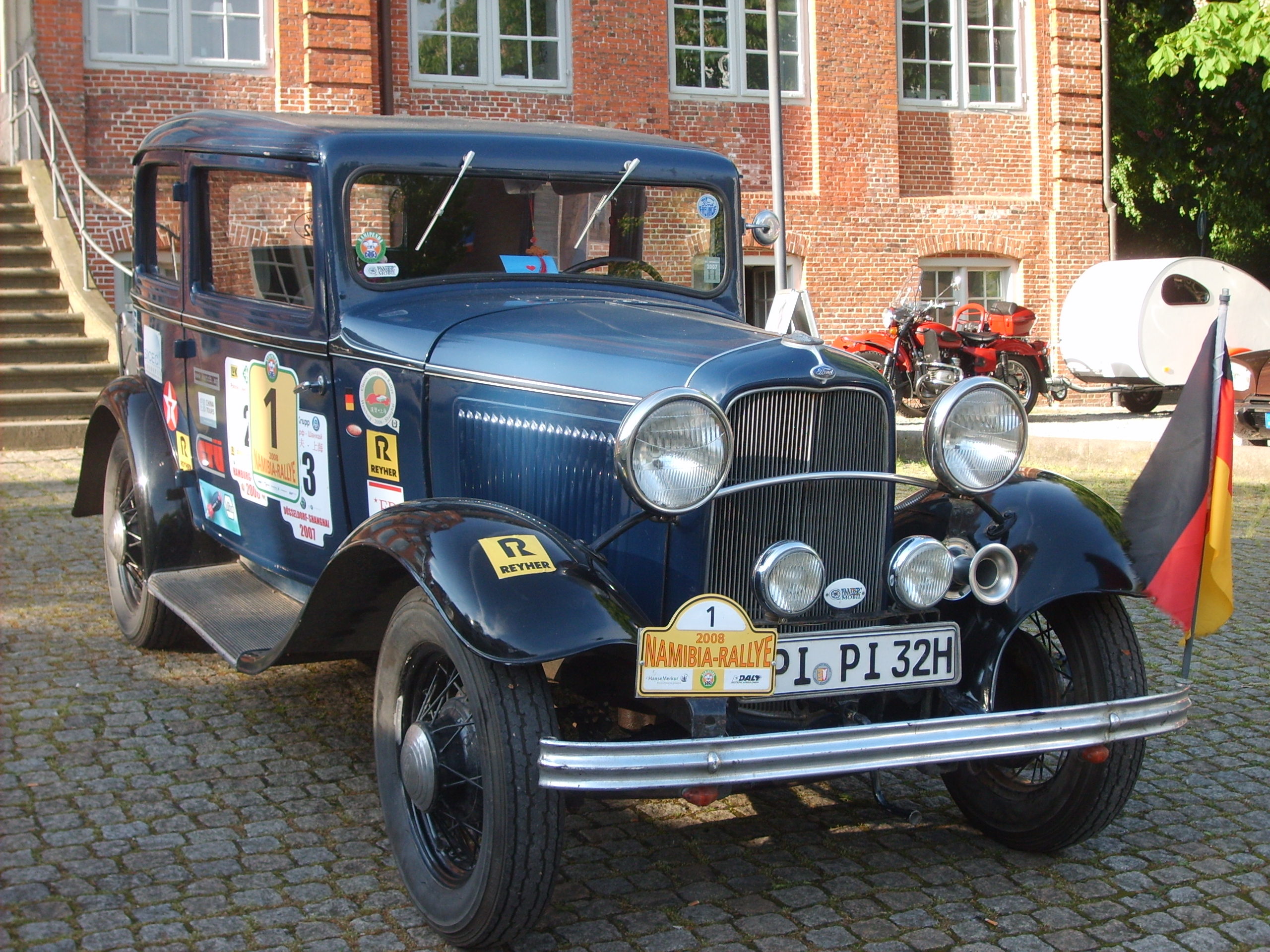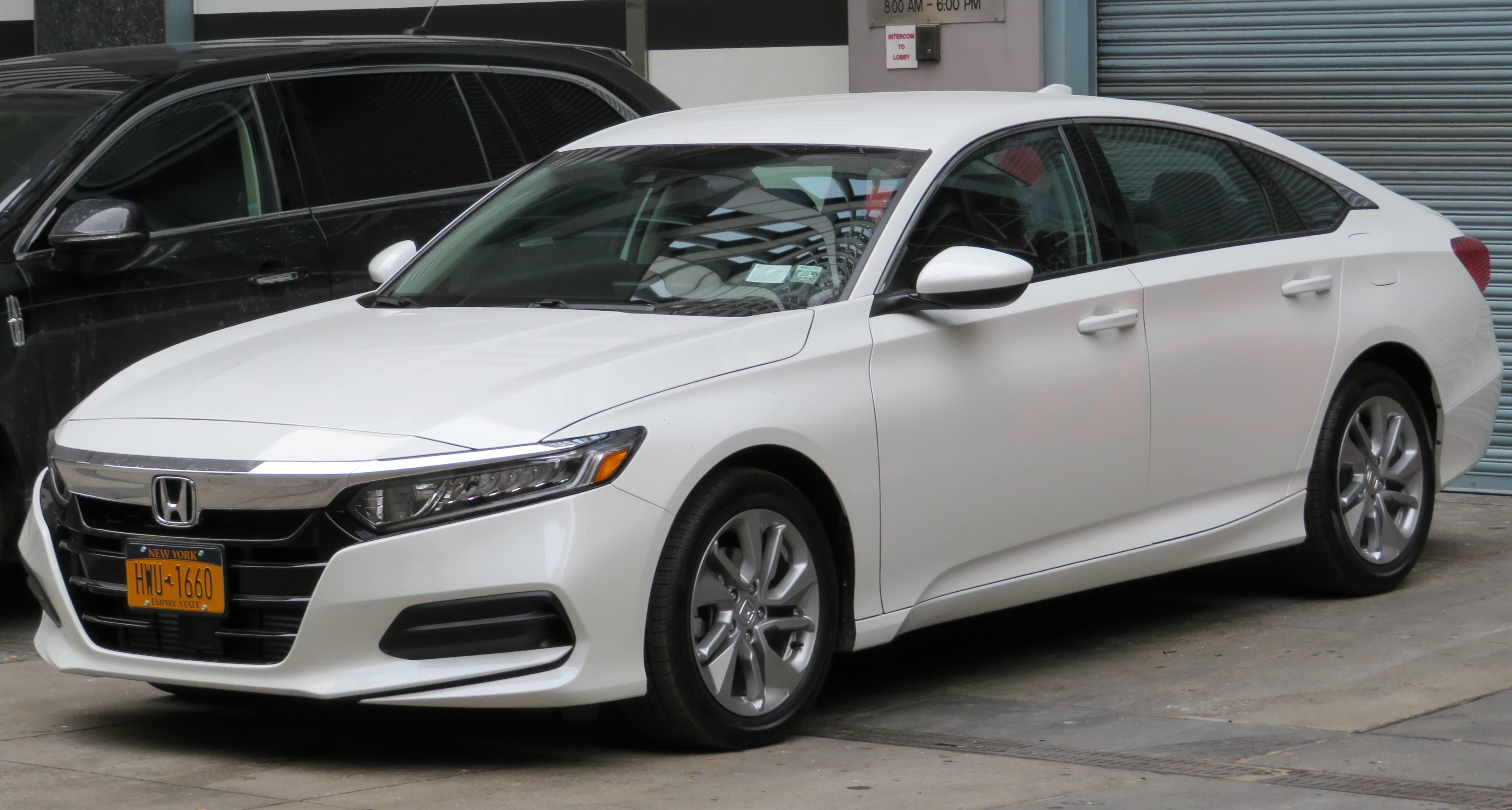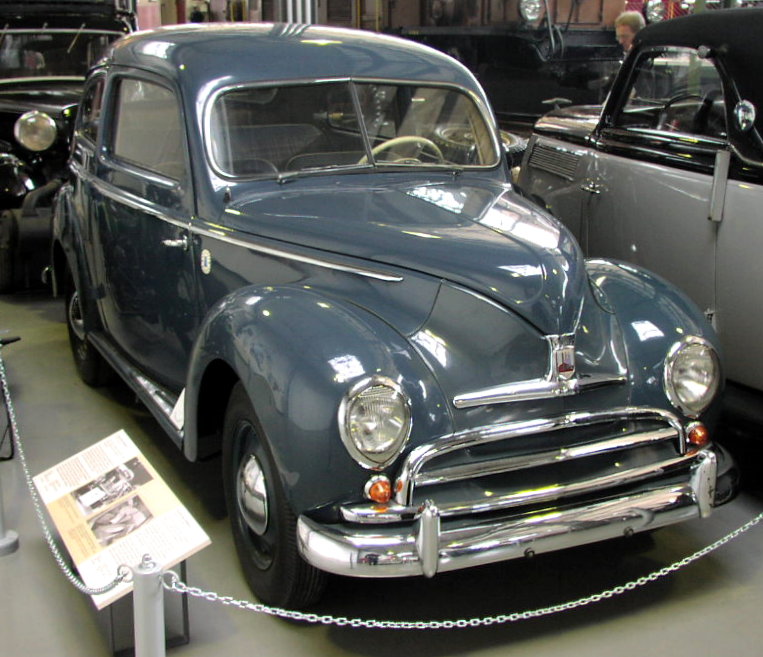|
Ford Taunus P5
The Ford Taunus 17 M is a middle-weight family saloon/sedan that was produced by Ford Germany between 1964 and 1967. The entire range was first presented in September 1964 and volume production of the two and four door saloons/sedans began in November 1964. The "Turnier" (estate/station wagon) version followed in January 1965 with coupé bodied cars coming along some time later. The Taunus 17M name had been applied to the car's predecessor and it would apply also to subsequent Ford models which is why the 17M introduced in 1964 is usually identified, in retrospect, as the Ford Taunus P5. It was the fifth newly designed German Ford to be launched after the war and for this reason it was from inception known within the company as Ford Project 5 (P5) or the Ford Taunus P5. The car was slightly larger in its overall exterior dimensions than its predecessor, but appeared in many respects to be a slightly toned down evolution from the more radical “Badewannetaunus” which it repl ... [...More Info...] [...Related Items...] OR: [Wikipedia] [Google] [Baidu] |
Ford Germany
Ford-Werke GmbH is a German car manufacturer headquartered in Niehl, Cologne, North Rhine-Westphalia. It is a subsidiary of Ford Motor Company, which operates two large manufacturing facilities in Germany, a plant in Cologne and a plant in Saarlouis. Berlin origins The earliest presence of the Ford Motor Company in Germany was a parts operation set up in Hamburg in 1912. At the end of 1924 the US Ford Motor Company established a sales office in Berlin which at the start of 1925 received a permit to import 1,000 tractors. In 1920 the government had imposed a tariff so high that it amounted to a prohibition against importing foreign automobiles, but this was reversed in October 1925. The move had evidently been anticipated by Ford, since on 18 August 1925 the ''Ford Motor Company Aktiengesellschaft'' had been entered in the Berlin Companies Register.Oswald, p 411 During 1925 an assembly plant was constructed in a rented warehouse in the Westhafen (western port) district of ... [...More Info...] [...Related Items...] OR: [Wikipedia] [Google] [Baidu] |
Ford Taunus P4
The Ford Taunus 12 M is a small family car that was produced by Ford Germany between September 1962 and August 1966. The Taunus 12M name had been used for the car’s predecessor and it would apply also to subsequent Ford models which is why the 12M introduced in 1962 is usually identified, in retrospect, as the Ford Taunus P4. It was the fourth newly designed German Ford to be launched after the war and for this reason it was from inception known within the company as Ford Project 4 (P4) or the Ford Taunus P4. More unusually, the car was originally designed not for production in Germany but to be produced in North America and sold as the Ford Cardinal, a home-grown competitor for the Volkswagen. A last minute change of strategy saw the US production plans cancelled, and in 1960 Ford of Germany received a fully developed modern new design which they adapted for German conditions in order to replace their own by now badly outdated Ford Taunus P1. North American design The 195 ... [...More Info...] [...Related Items...] OR: [Wikipedia] [Google] [Baidu] |
Mid-size Cars
Mid-size—also known as intermediate—is a vehicle size class which originated in the United States and is used for cars larger than compact cars and smaller than full-size cars. "Large family car" is a UK term and a part of the D-segment in the European car classification. Mid-size cars are manufactured in a variety of body styles, including sedans, coupes, station wagons, hatchbacks, and convertibles. Compact executive cars can also fall under the mid-size category. History The automobile that defined this size in the United States was the Rambler Six that was introduced in 1956, although it was called a "compact" car at that time. Much smaller than any standard contemporary full-size cars, it was called a compact to distinguish it from the small imported cars that were being introduced into the marketplace. By the early 1960s, the car was renamed the Rambler Classic and while it retained its basic dimensions, it was now competing with an array of new "intermediate ... [...More Info...] [...Related Items...] OR: [Wikipedia] [Google] [Baidu] |
Ford Taunus
The Ford Taunus is a family car that was sold by Ford Germany throughout Europe. Models from 1970 onward were built on the same basic construction as the Ford Cortina MkIII in the United Kingdom, and later on, the two car models were essentially the same, differing almost only in the placement of the steering wheel. The model line was named after the Taunus mountain range in Germany, and was first made in 1939, and continued through several versions until 1994. Taunus G93A (1939–1942) / G73A (1948–1952) The Ford Taunus G93A was a development of the Ford Eifel, and used the same 1172-cc four cylinder engine, but in a longer chassis and a streamlined body. It was the first German Ford to have hydraulic brakes. Due to the war, production was interrupted from 1942 to 1948; 7,128 were made, including estate cars and light vans. Taunus M-series (1952–1968) From 1952 to 1968, all German Fords were called the Taunus, using the model names 12M, 15M, 17M, 20M, and 26M (on some S ... [...More Info...] [...Related Items...] OR: [Wikipedia] [Google] [Baidu] |
Rhodesia
Rhodesia (, ), officially from 1970 the Republic of Rhodesia, was an unrecognised state in Southern Africa from 1965 to 1979, equivalent in territory to modern Zimbabwe. Rhodesia was the ''de facto'' successor state to the British colony of Southern Rhodesia, which had been self-governing since achieving responsible government in 1923. A landlocked nation, Rhodesia was bordered by South Africa to the south, Bechuanaland (later Botswana) to the southwest, Zambia (formerly Northern Rhodesia) to the northwest, and Mozambique ( a Portuguese province until 1975) to the east. From 1965 to 1979, Rhodesia was one of two independent states on the African continent governed by a white minority of European descent and culture, the other being South Africa. In the late 19th century, the territory north of the Transvaal was chartered to the British South Africa Company, led by Cecil Rhodes. Rhodes and his Pioneer Column marched north in 1890, acquiring a huge block of territory that ... [...More Info...] [...Related Items...] OR: [Wikipedia] [Google] [Baidu] |
Southern Rhodesia
Southern Rhodesia was a landlocked self-governing British Crown colony in southern Africa, established in 1923 and consisting of British South Africa Company (BSAC) territories lying south of the Zambezi River. The region was informally known as south Zambesia until annexed by Britain at the behest of Cecil Rhodes's British South Africa Company, for whom the colony was named. The bounding territories were Bechuanaland (Botswana), Northern Rhodesia (Zambia), Moçambique (Mozambique), and the Transvaal Republic (for two brief periods instead the British Transvaal Colony, from 1910 the Union of South Africa, and then from 1961 the Republic of South Africa). This southern region, known for its extensive gold reserves, was first purchased by the BSAC's Pioneer Column on the strength of a Mineral Concession extracted from its Matabele overlord, Lobengula, and various majority Mashona vassal chiefs in 1890. Though parts of the territory were laid claim to by the Bechuana and Po ... [...More Info...] [...Related Items...] OR: [Wikipedia] [Google] [Baidu] |
South Africa
South Africa, officially the Republic of South Africa (RSA), is the southernmost country in Africa. It is bounded to the south by of coastline that stretch along the South Atlantic and Indian Oceans; to the north by the neighbouring countries of Namibia, Botswana, and Zimbabwe; and to the east and northeast by Mozambique and Eswatini. It also completely enclaves the country Lesotho. It is the southernmost country on the mainland of the Old World, and the second-most populous country located entirely south of the equator, after Tanzania. South Africa is a biodiversity hotspot, with unique biomes, plant and animal life. With over 60 million people, the country is the world's 24th-most populous nation and covers an area of . South Africa has three capital cities, with the executive, judicial and legislative branches of government based in Pretoria, Bloemfontein, and Cape Town respectively. The largest city is Johannesburg. About 80% of the population are Black South Afri ... [...More Info...] [...Related Items...] OR: [Wikipedia] [Google] [Baidu] |
Right Hand Drive
Left-hand traffic (LHT) and right-hand traffic (RHT) are the practices, in bidirectional traffic, of keeping to the left side or to the right side of the road, respectively. They are fundamental to traffic flow, and are sometimes referred to as the '' rule of the road''. The terms right- and left-hand ''drive'' refer to the position of the driver and the steering wheel in the vehicle and are, in automobiles, the reverse of the terms right- and left-hand ''traffic''. The rule also extends to where on the road a vehicle is to be driven, if there is room for more than one vehicle in the one direction, as well as the side on which the vehicle in the rear overtakes the one in the front. For example, a driver in an LHT country would typically overtake on the right of the vehicle being overtaken. RHT is used in 165 countries and territories, with the remaining 75 countries and territories using LHT. Countries that use left-hand traffic account for about a sixth of the world's land ... [...More Info...] [...Related Items...] OR: [Wikipedia] [Google] [Baidu] |
MacPherson Struts
The MacPherson strut is a type of automotive suspension system that uses the top of a telescopic damper as the upper steering pivot. It is widely used in the front suspension of modern vehicles, and is named for American automotive engineer Earle S. MacPherson, who invented and developed the design. History Earle S. MacPherson was appointed the chief engineer of Chevrolet's Light Car project in 1945. He was tasked with developing a new, smaller car for the immediate post-war market, an effort that led to the Chevrolet Cadet. The Cadet was poised to be a groundbreaking vehicle, and the three prototypes that had been built by 1946 displayed a wide range of innovations. One of these was a revolutionary new independent suspension system that featured what is now known as MacPherson strut. The Cadet was slated to be the first production vehicle with MacPherson struts, but the project was cancelled in 1947 and never saw commercial production. This was in large part due to GM's conce ... [...More Info...] [...Related Items...] OR: [Wikipedia] [Google] [Baidu] |
Opel Rekord
The Opel Rekord is a large family car which was built in eight generations by the German car manufacturer Opel. Between 1953 and 1986, approximately ten million were sold. In 1986, the Rekord nameplate was replaced by the Opel Omega. Naming The Rekord name evolved into the main name of the model; at first the name was used in close relationship with the Opel Olympia name, which pre-dated the Rekord but was also reinstated in a separate model in 1967. The various generations are described here with the manufacturer's, or other commonly used designations such as "Rekord P I" or "Rekord B". The car was not badged with these additional appellations. Olympia Rekord (1953–1957) The Opel Olympia Rekord was introduced in March 1953 as successor to the Opel Olympia, a pre-World War II design dating back to 1935. The Opel Olympia Rekord was built until 1957 in four different versions. Around 580,000 units were produced. Styling of the 1953–54 sedans resembled scaled-down versions ... [...More Info...] [...Related Items...] OR: [Wikipedia] [Google] [Baidu] |
Opel Kapitän
The Opel Kapitän is a luxury car made in several different generations by the German car manufacturer Opel from 1938 until 1970. Kapitän (1938–1940) The Kapitän was the last new Opel model to appear before the outbreak of the Second World War, developed during 1938 and launched in the spring of 1939 at the Geneva motor show. Production began in November 1938. The first Kapitän was available in many different body styles, the most popular one being the 4-door saloon. 2-door coupé cabriolets were also built. The pre-war Kapitän featured a unitary body, an innovative feature for its time; it was studied by the Soviet engineers and heavily influenced the design of the GAZ-M20 Pobeda. The Kapitän inherited its 2.5-litre engine from its predecessor: in this application a maximum speed of 118 km/h (73 mph) was reported. Civilian automobile production by Opel ceased in the Fall / Autumn of 1940, by which time 25,371 Kapitäns had been produced: a further th ... [...More Info...] [...Related Items...] OR: [Wikipedia] [Google] [Baidu] |




